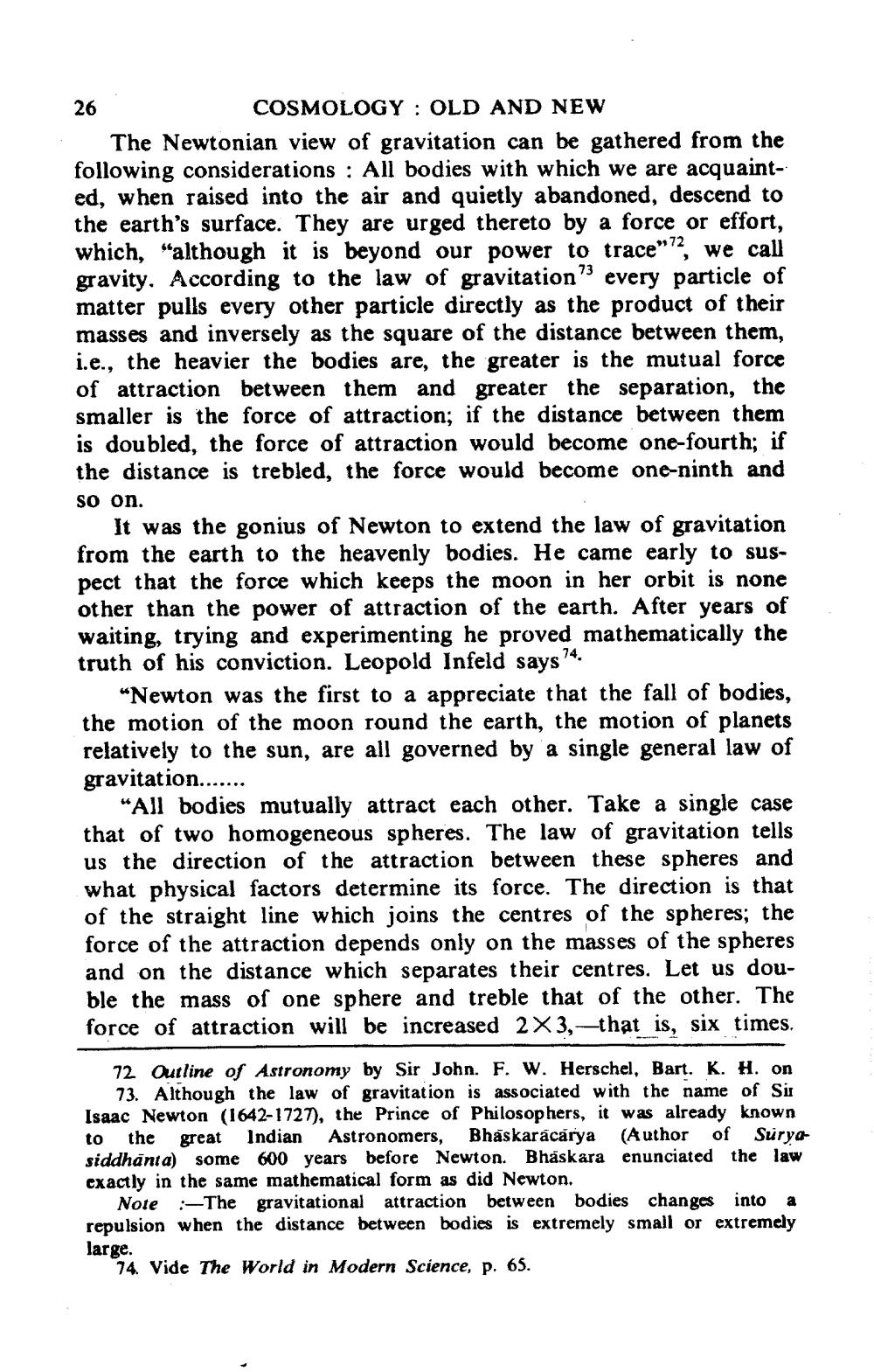________________
COSMOLOGY OLD AND NEW
73
The Newtonian view of gravitation can be gathered from the following considerations: All bodies with which we are acquainted, when raised into the air and quietly abandoned, descend to the earth's surface. They are urged thereto by a force or effort, which, "although it is beyond our power to trace""2, we call gravity. According to the law of gravitation23 every particle of matter pulls every other particle directly as the product of their masses and inversely as the square of the distance between them, i.e., the heavier the bodies are, the greater is the mutual force of attraction between them and greater the separation, the smaller is the force of attraction; if the distance between them is doubled, the force of attraction would become one-fourth; if the distance is trebled, the force would become one-ninth and
26
so on.
It was the gonius of Newton to extend the law of gravitation from the earth to the heavenly bodies. He came early to suspect that the force which keeps the moon in her orbit is none other than the power of attraction of the earth. After years of waiting, trying and experimenting he proved mathematically the truth of his conviction. Leopold Infeld says14.
"Newton was the first to a appreciate that the fall of bodies, the motion of the moon round the earth, the motion of planets relatively to the sun, are all governed by a single general law of gravitation.......
"All bodies mutually attract each other. Take a single case that of two homogeneous spheres. The law of gravitation tells us the direction of the attraction between these spheres and what physical factors determine its force. The direction is that of the straight line which joins the centres of the spheres; the force of the attraction depends only on the masses of the spheres and on the distance which separates their centres. Let us double the mass of one sphere and treble that of the other. The force of attraction will be increased 2X3,-that is, six times.
72 Outline of Astronomy by Sir John. F. W. Herschel, Bart. K. H. on 73. Although the law of gravitation is associated with the name of Sir Isaac Newton (1642-1727), the Prince of Philosophers, it was already known to the great Indian Astronomers, Bhaskaracarya (Author of Suryasiddhanta) some 600 years before Newton. Bhaskara enunciated the law exactly in the same mathematical form as did Newton.
Note :-The gravitational attraction between bodies changes into a repulsion when the distance between bodies is extremely small or extremely large.
74. Vide The World in Modern Science, p. 65.




